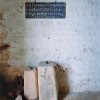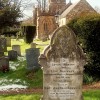From the 11th century to the early years of 14th century the manor of West Woodsford was held by the Belet family. It then passed in 1335 to William de Whitefield it was then that a licence was granted to crenellate the manor house, in other words to furnish it with battlements or loopholes ie parapets with notches or tooth-edges to shoot through. The work of fortifying the house was probably completed by Guy de Brian, to whom the manor passed in 1367. Thomas Gerard in his 17th century work says: ”it became the possession of Hugh Stafford by one of whose heires it came to Thomas Strangeways”. The Strangeways held it for three hundred years. The manor house is one of the oldest inhabited buildings in England, the oldest part of it being erected in the reign of Edward III.
Known as Woodsford Castle, though there is little here now to suggest a castle, it was a strongly fortified house arranged with the principal accommodation to the north on the first floor, served from below. The servants were housed on the ground and south side of the first floor.
Commenting on the house in the early 20th century Sir Frederick Treves described it as an unkempt farmhouse with fowls strutting in and out of its arched doorway. Treves observed there is little left of the castle and remarked on its broken off walls, poorly maintained thatch, drab chimneys and its bricked up windows. It would seem little had changed since 1630 when Thomas Gerard (author of Coker’s Survey of Dorset) described it as being “almost ruinated”.
Originally a square building with five feet thick walls that had arrow slits and towers at each corner topped with machicolated parapets that have long since disappeared. It had vaulted rooms, a chapel, a haunted chamber and a kitchen with a fireplace having a 14 foot span; there was a beacon tower too. Just one side of the original quadrangular stone building survives. Around 1660 it was converted to a farmhouse.
This impressive building is Grade I Listed. In recent years it has been restored and is now owned by the Landmark Trust.
There is a photo of the ‘castle’ in the gallery.



